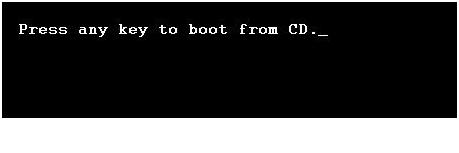

- #WINDOWS XP RECOVERY CONSOLE COMMANDS HOW TO#
- #WINDOWS XP RECOVERY CONSOLE COMMANDS INSTALL#
- #WINDOWS XP RECOVERY CONSOLE COMMANDS DRIVER#
- #WINDOWS XP RECOVERY CONSOLE COMMANDS WINDOWS#
One example of a device name for a new partition is \device\harddisk0. The device-name argument is the device name for a new partition.The /delete option deletes an existing partition.The /add option creates a new partition.It is a good idea to note the original startup type so that you can use the enable command to restart the service.ĭiskpart manages partitions on hard disk volumes. When you use this command to disable a service, it displays the service's original startup type before changing the type to SERVICE_DISABLED.

#WINDOWS XP RECOVERY CONSOLE COMMANDS DRIVER#
The servicename argument is the name of the service or the driver that you want to disable.
#WINDOWS XP RECOVERY CONSOLE COMMANDS WINDOWS#
By default, you cannot use wildcard characters.ĭir displays a list of all files, including hidden and system files.ĭisable disables a Windows system service or a Windows driver. Del operates in the system directories of the current Windows installation, in removable media, in the root directory of any hard disk partition, or in the local installation sources. Copying a compressed file from the Windows Server 2003 installation CD automatically decompresses the file.ĭel (delete) deletes one file. By default, the target cannot be removable media, and you cannot use wildcard characters. If Chkdsk cannot find the installation CD, it prompts the user for the location of Autochk.exe.Ĭopy copies one file to a target location. If Chkdsk cannot find the file in the startup folder, it looks for the Windows Server 2003 installation CD. Chkdsk automatically looks for Autochk.exe in the startup folder or in the boot folder. r switch locates bad sectors and recovers readable information. You can use the bootcfg command to make changes to the Boot.ini file.ĬD (chdir) operates only in the system directories of the current Windows installation, in removable media, in the root directory of any hard disk partition, or in the local installation sources.Ĭhkdsk: The /p switch runs Chkdsk even if the drive is not flagged as dirty. If you omit the OutputFile argument, output is displayed on the screen.īootcfg is used for boot configuration and recovery. OutputFile holds the output of the commands. The following list describes the available commands for the Recovery Console:Īttrib changes attributes on one file or folder.īatch executes commands that you specify in the text file, InputFile. To quit the Recovery Console and restart the computer, typeĮxit at the command prompt, and then press ENTER.
#WINDOWS XP RECOVERY CONSOLE COMMANDS HOW TO#
For information about how to do so, see the Precautionary Measures section in this article.
#WINDOWS XP RECOVERY CONSOLE COMMANDS INSTALL#
Help at the command prompt, and then press ENTER.Īlternatively, you can install the Recovery Console as a startup option on the computer so that it is always available. Select the Windows installation that you must access from the Recovery Console.įollow the instructions that appear on the screen, type the Administrator password, and then press ENTER.Īt the command prompt, type the appropriate Recovery Console commands to repair your Windows Server 2003 installation.įor a list of commands that are available in the Recovery Console, type When the Welcome to Setup screen appears, press the R key to start the Recovery Console. When you receive the message that prompts you to press any key to start from the CD, press a key to start the computer from the Windows Server 2003 CD. Insert the Windows Server 2003 CD in the computer's CD or DVD drive. For more information, see the computer documentation or contact the computer manufacturer. To run the Recovery Console, follow these steps:Ĭonfigure the computer to start from the CD or the DVD drive. Also, if your computer is connected to a network, network policy settings may prevent you from completing this procedure.

You must be logged on as Administrator or as a member of the Administrators group to perform this procedure.


 0 kommentar(er)
0 kommentar(er)
